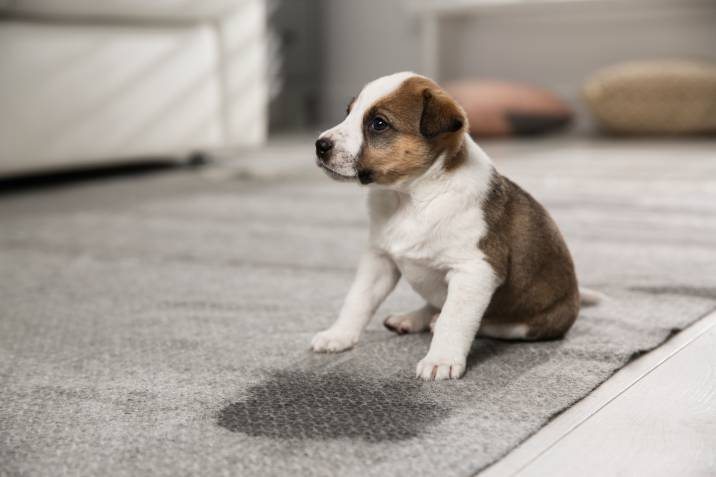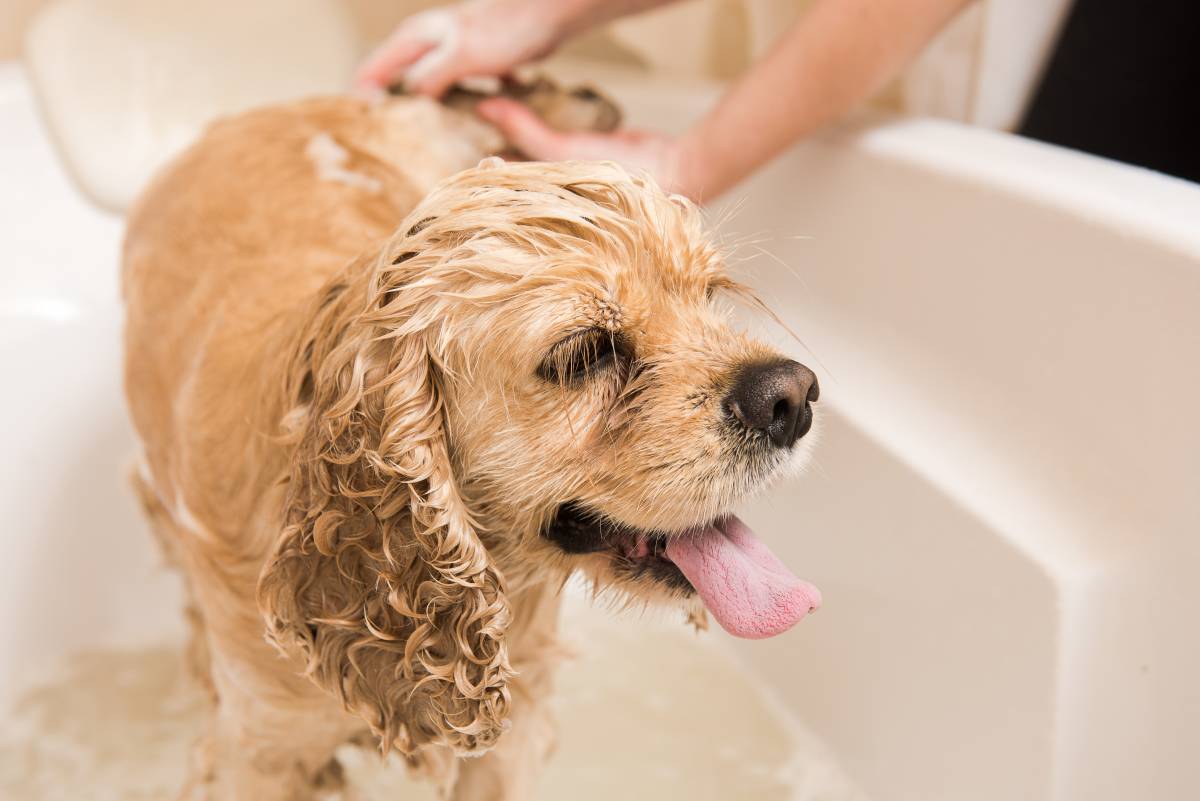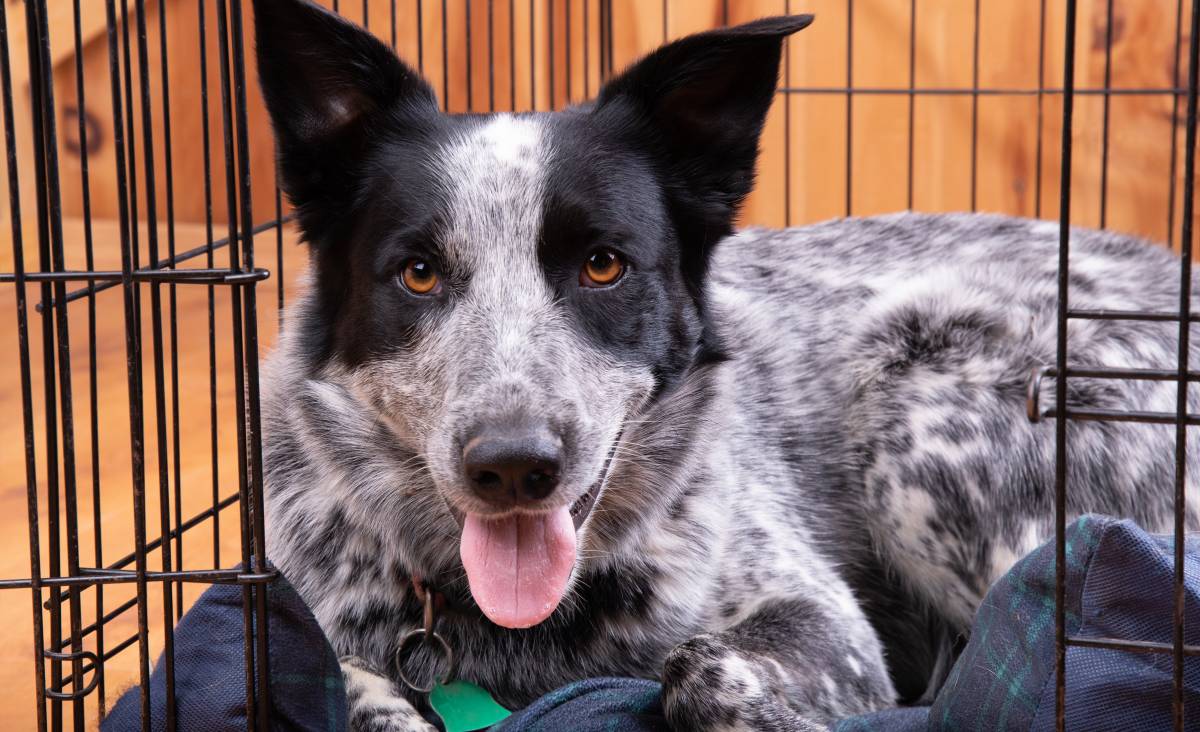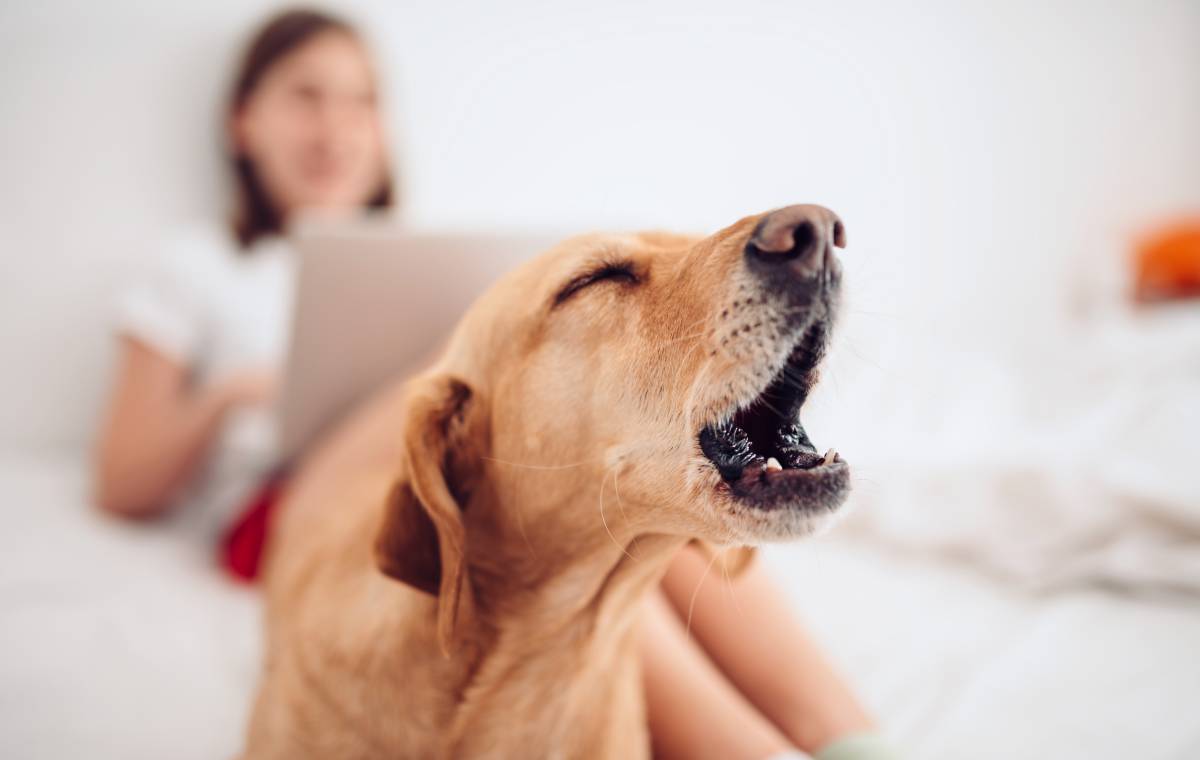- Home/
- Guides/
- Puppy Training/
- How to Toilet Train a Puppy

Toilet training your puppy - Steps, tips for success
Need help toilet training your puppy? Learn from local puppy trainers in our community!
Join Airtasker today!Last Updated on
Taken the leap and gotten yourself a new puppy? Congratulations! Your shoes will never be safe again, your dryer is not the only thing that will eat your socks, and your garden will gain more holes than a pin cushion.
Now it’s time to get ready for the next step – puppy toilet training. When you bring home a new furry bundle of joy, toilet training is usually the last thing on your mind. Caught up in those butter couldn’t melt in their mouth eyes, cute puppy tummies, and puppy playtime, it’s easy to leave the discipline for another day.
But it’s important to instil some rules from the get-go. You don’t have to be a professional dog trainer to master these easy-to-follow tips.
How to properly toilet train a puppy
Since puppies are essentially in the learning stage, a routine is the best way to toilet train a puppy. It helps to take your puppy out frequently for potty breaks. The average period is every two hours. But it would be best if you also headed out immediately after your puppy eats or drinks.
Step 1: Pick a potty spot.

To effectively roll out your puppy potty training schedule, designate a single spot for your puppy to go. Doing this can reduce the risk of accidental elimination within the home.
How to train a puppy to potty outside: To help your puppy remember the place, you can say a phrase or word (e.g., “go pee”) that they can associate with every time they go. This Pavlovian trick is a classic.
How to potty train a puppy indoors: If you wish to potty train your puppy indoors, you can use puppy pads. Applying the same treatment as outdoor training, you can choose a certain potty spot inside for your pet. Once you have selected a spot, place the puppy pad there.
Step 2: Familiarise yourself with your puppy’s cues.
When you toilet train your puppy, you should pay attention to their cues. Some obvious signs of your puppy wanting to go are the following:
Your puppy looks anxious.
Your puppy walks around in circles.
Your puppy starts sniffing the corners of the room.
Your puppy disappears and leaves the room by himself.

If you spot any of these behaviours, take your puppy outside immediately.
Changing your frame of mind will help you potty train your puppy effectively. Consider this aspect as a learning journey for you and your pup instead of a chore.
Step 3: Reward your puppy for a job well done.

Rewarding your puppy is a crucial step in the potty training process. Make sure you immediately reward your puppy after it successfully relieves itself. Giving your puppy a treat on the spot can help them understand that what they did was a good thing.
Do not wait until your puppy heads back inside. Praising and rewarding them after time has passed will only confuse them, and they will not be able to absorb what they did right.
Step 4: Address mistakes immediately.
On the flipside, accidents happen. If you are potty training a stubborn puppy especially, it may feel like ages until they understand what they’re supposed to do. But when mistakes happen, you can confine the area (properly and humanely, please!) where they should do their business.

If you are potty training a puppy in the apartment and they leak by mistake, you can transfer the soiled wipes to the spot where you want them to go. This can help them trace the scent and gravitate there every time they need to go.
Step 5: Accompany your dog until they are toilet trained.

Your puppy will more easily follow their potty training schedule if you are present throughout the process. Whether you are training your puppy how to potty outside or inside, your presence will help your puppy feel more confident and comfortable with their schedules. Moreover, you can also be on guard for any mistakes that can happen and address them right away.
| Also read: Your Ultimate Guide to Dog Care – Everything you need to know about caring for a dog, from grooming to training |
Night-time toilet training
When your puppy is in the middle of toilet training, try to set some timeframes during the night to wake up for training. You’ll need to keep this up until you are confident your puppy can hold on till morning.
Puppies will generally get the idea quickly and will do everything they can to alert you through the night when they need to go (like singing you a puppy song). Two to three relief periods during the night are a good starter until the puppy is trained.
More puppy potty training tips
Here are some puppy potty training tips to keep in mind.
-
Estimate how often to take your puppy to their potty spot. Try the month-plus-one rule, which lets you measure how long a puppy can comfortably hold their pee. Take your puppy’s age in months and add one. For instance, a 3-month-old puppy’s pee schedule would be every 4 hours.
But even with these specific tips, it’s still best to watch out for the cues your puppy gives you because each puppy is different.
Avoid punishing your puppy when they make mistakes. Accidents happen and unless you want your puppy to hide their mishaps next time, never rub their nose in their urine. Simply clean up accidents immediately to mask the smell in the area and discourage a repeat incident.
Always remember that puppy toilet training takes practice and patience. With persistence and some gentle encouragement, your puppy will know the difference between toilet stop and toilet not in no time at all.
Make potty training your puppy easier.
Puppies form toilet habits fast, making potty training a crucial task. An experienced puppy trainer can help you establish a routine with your pup. Training sessions can also help your puppy learn some basic obedience skills. You can also book related pet care services like puppy sitting and dog walking on Airtasker.
FAQs on toilet training a puppy
Toilet training a puppy between 12 weeks and 16 weeks old is recommended. This age is when a puppy has learned to control its bladder and bowel movements. But it’s also helpful to potty train a puppy as soon as they come home. This way, you can inhibit bad habits from forming from the onset. Puppies urinate frequently. So for ultimate success, give your puppy the opportunity to relieve himself every two hours. Smaller breeds of dogs have smaller bladders and therefore need to go more often.
On average, puppies can be toilet trained in 4-6 months, with a maximum learning period of one year. But how long it takes to toilet train a puppy depends on several factors. Toilet training can be an arduous, messy task. Aside from your puppy’s capability to pick up on cues, their learning will also depend on their age, size, physical abilities, and attention span. With the right strategy, tools, and knowing when your puppy needs to go, you'll be able to effectively potty train your puppy faster than you think.
It’s highly unlikely to toilet train a puppy in 7 days unless they’ve reached the appropriate age to hold their bladder longer. The time it takes to toilet train a puppy also depends on the breed and size. Remember, smaller breeds of dogs have smaller bladders and therefore need to go more often.
Find puppy trainers, fast
Find a puppy trainer
Related articles

How to groom a long-haired dog
Read more

How to groom a dog at home
Read more

The most popular dog haircuts
Read more

How to become a dog trainer
Read more

How to become a dog groomer
Read more

Dog training 101: How to train your dog
Read more

Your ultimate guide to dog care
Read more

Tips for training an older dog
Read more

3 Effective ways to house train a dog
Read more

Reactive dog training tips
Read more

How often should you wash your dog?
Read more
Related price guides

How much does dog training cost?
Read more

What are average dog sitting prices?
Read more

How much does doggy day care cost?
Read more

How much does dog grooming cost?
Read more

How much do dog walkers charge?
Read more












